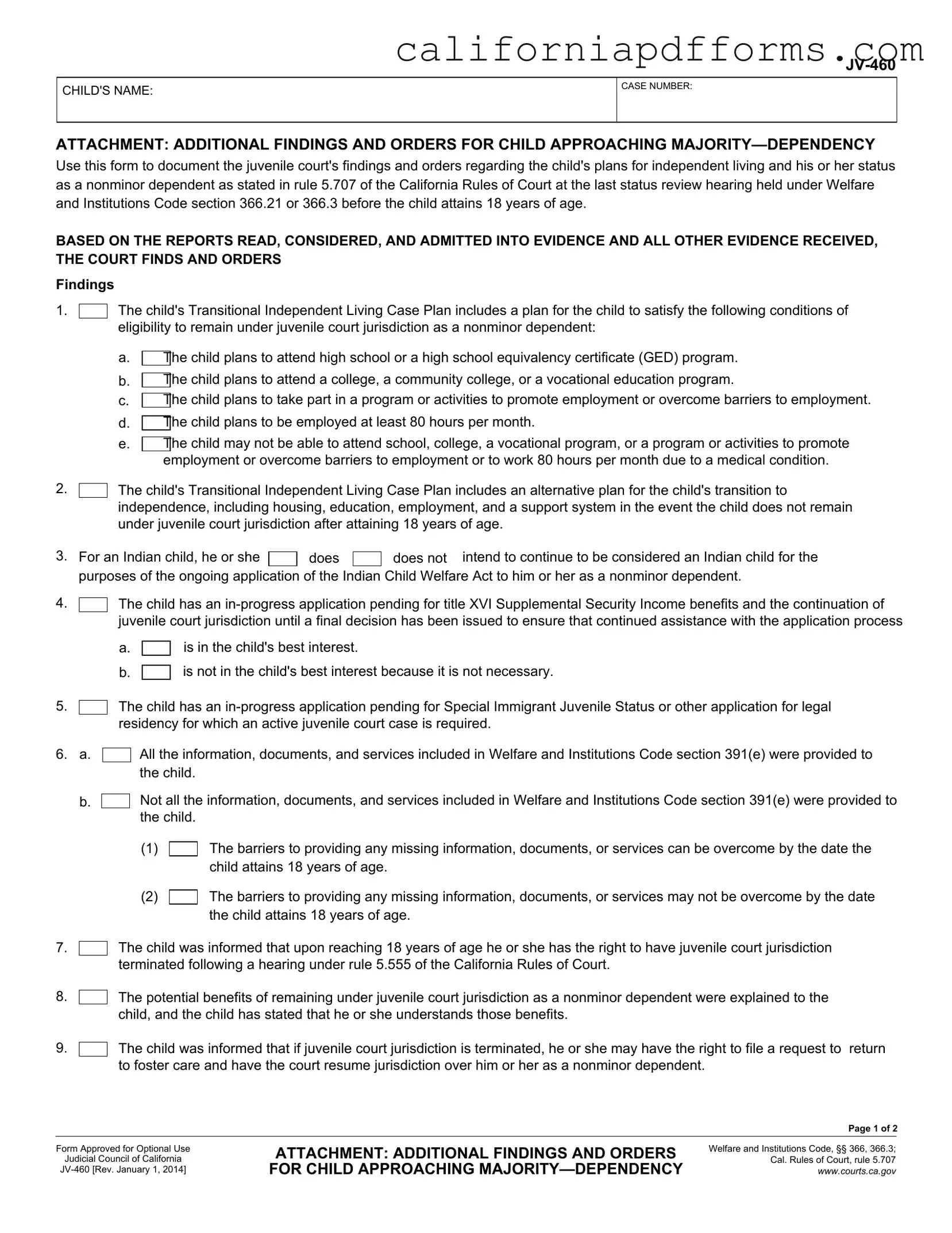The California JV-460 form is designed to document the juvenile court's findings and orders related to a child's plans for independent living as they approach adulthood. It is specifically used during the last status review hearing before the child turns 18, as outlined in the California Rules of Court. The form captures essential details about the child's educational, employment, and living arrangements as they transition to independence.
The JV-460 form should be completed by the juvenile court or relevant court personnel during a status review hearing. It is essential that the information reflects the child’s current situation and future plans, ensuring that the court has accurate and up-to-date information to make informed decisions regarding the child’s welfare.
The form requires several key pieces of information, including:
-
The child's name and case number.
-
Details about the child's Transitional Independent Living Case Plan, which includes educational and employment goals.
-
Any pending applications for benefits or legal residency.
-
Findings regarding the provision of necessary information and services to the child.
-
Decisions about the child's intention to remain under juvenile court jurisdiction after turning 18.
What are the eligibility conditions for remaining under juvenile court jurisdiction?
To remain under juvenile court jurisdiction as a nonminor dependent, a child must meet specific eligibility conditions. These include:
-
Attending high school or a GED program.
-
Enrolling in college, community college, or vocational training.
-
Participating in employment programs or activities.
-
Working a minimum of 80 hours per month.
In some cases, medical conditions may affect the child's ability to meet these requirements.
What happens if a child does not intend to remain under juvenile court jurisdiction?
If a child does not wish to remain under juvenile court jurisdiction after turning 18, a hearing will be scheduled at the child's request. This hearing will address the termination of jurisdiction and any potential rights the child may have to return to foster care in the future.
What are the potential benefits of remaining under juvenile court jurisdiction?
Remaining under juvenile court jurisdiction as a nonminor dependent can provide several benefits. These may include continued access to support services, financial assistance, and guidance as the child transitions to independent living. The court will ensure that the child understands these benefits during the hearing process.
How can a child apply for Supplemental Security Income (SSI) benefits?
A child can apply for title XVI Supplemental Security Income benefits while still under juvenile court jurisdiction. The court may extend jurisdiction until a final decision on the application is made. This extension ensures that the child receives assistance throughout the application process, which can be crucial for their financial stability.
If a child has not received all the required information or services as outlined in the Welfare and Institutions Code, they should communicate this to the court. The court will assess whether the barriers to providing these services can be resolved before the child turns 18. If so, steps will be taken to ensure the child receives the support they need.
